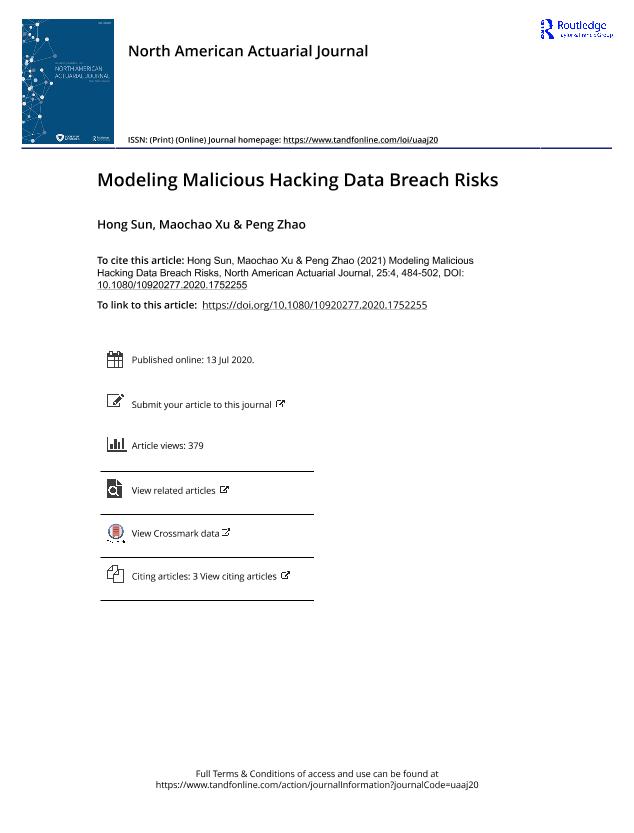Modeling Malicious Hacking Data Breach Risks

Contenido multimedia no disponible por derechos de autor o por acceso restringido. Contacte con la institución para más información.
| Tag | 1 | 2 | Value |
|---|---|---|---|
| LDR | 00000cab a2200000 4500 | ||
| 001 | MAP20220000673 | ||
| 003 | MAP | ||
| 005 | 20220114125731.0 | ||
| 008 | 220114e20211206esp|||p |0|||b|spa d | ||
| 040 | $aMAP$bspa$dMAP | ||
| 084 | $a6 | ||
| 100 | 1 | $0MAPA20220000116$aSun, Hong | |
| 245 | 1 | 0 | $aModeling Malicious Hacking Data Breach Risks$cHong Sun, Maochao Xu, Peng Zhao |
| 520 | $aMalicious hacking data breaches cause millions of dollars in financial losses each year, and more companies are seeking cyber insurance coverage. The lack of suitable statistical approaches for scoring breach risks is an obstacle in the insurance industry. We propose a novel frequencyseverity model to analyze hacking breach risks at the individual company level, which would be valuable for underwriting purposes. We find that breach frequency can be modeled by a hurdle Poisson model, which is different from the negative binomial model used in the literature. The breach severity shows a heavy tail that can be captured by a nonparametric- generalized Pareto distribution model. We further discover a positive nonlinear dependence between frequency and severity, which our model also accommodates. Both the in-sample and out-of-sample studies show that the proposed frequencyseverity model that accommodates nonlinear dependence has satisfactory performance and is superior to the other models, including the independence frequencyseverity and Tweedie models. | ||
| 700 | $0MAPA20120013339$aXu, Maochao | ||
| 700 | 1 | $0MAPA20190008785$aZhao, Peng | |
| 773 | 0 | $wMAP20077000239$g06/12/2021 Tomo 25 Número 4 - 2021 , p. 484-502$x1092-0277$tNorth American actuarial journal$dSchaumburg : Society of Actuaries, 1997- |

